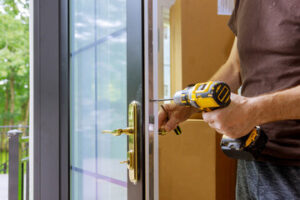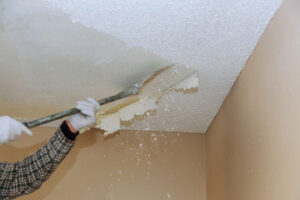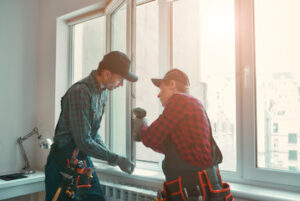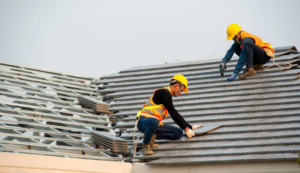The front door is one of the most used and abused household fixtures. It gets knocked, slammed, and exposed to harsh outdoor elements. This wear and tear can cause damage, rust, or leaks that require replacement.

A new front door is a great way to boost your home’s curb appeal and improve energy efficiency. However, it can cost anywhere from $500 to $5,000 or more, depending on your preferences and customizations. For professional help, contact Front Door Replacement Austin.
The front door is a key part of a home’s security system and provides a first impression of the interior living space. It also protects indoor living spaces from weather conditions, such as rain and cold air. Over time, a front door can become damaged or worn out and requires replacement. The cost of a new door depends on its material, size, and design.
The cost of a new door can be a significant investment, but it can add value to your property and increase your home’s curb appeal. It is important to take the time to choose a door that fits your style and budget. Choosing the wrong door may not only be ineffective, but could result in future repairs or energy costs. It is also important to consider the costs associated with installation and other features, such as a deadbolt lock or security camera, when planning your budget.
A front door can be made from a variety of materials, including wood (classic and generally the most expensive), steel, fiberglass, or even plastic. Each type has its own benefits, but each has different upfront and maintenance costs. Energy efficiency is another factor that should be taken into consideration, as well as durability and aesthetics. Some doors are made with insulated cores and weather stripping, which can reduce energy bills and increase comfort.
While it is possible to replace your front door on your own, it is usually more cost-effective to hire a professional. This will ensure that the work is done properly and that all necessary materials are used. Additionally, professionals will be able to provide you with accurate estimates before starting the project.
The overall cost of front door replacement can vary widely, depending on the door’s material, size, and design. Additional features, such as decorative glass or hardware, can also increase the price. Other expenses include a general contractor’s overhead and markup, sales tax on materials, and removal and disposal costs. It is important to estimate all the costs of a project before beginning, as this can help you determine whether or not it is within your budget.
Durability
Your front door is the first thing that people see when they visit your home. It serves more than just a barrier to the outside world, it can also express your design aesthetic and set the tone for your home’s interior. However, like any other feature in your home, your entry door will eventually need to be replaced. The good news is that a new front door can provide numerous benefits for your home, including increased durability and security.
The main factors to consider when choosing a front door replacement are its material, durability and energy efficiency. The most popular door options are wood, fiberglass, and steel. Each type offers unique advantages and disadvantages in terms of price, maintenance requirements, energy efficiency and long-term appearance.
Wood doors, for instance, are the most traditional, but they require extensive upkeep to maintain their quality and beauty. This is because they are exposed to harsh weather conditions, which can lead to shrinking and unalignment with the frame. Additionally, they are susceptible to rot, dry rot and insect damage.
Fiberglass and steel front doors, on the other hand, are less expensive than natural wood options and offer superior durability. They are also resistant to rot, cracking, warping and swelling and come with pre-applied finishes that resist chipping, fading and peeling, which eliminates the need for frequent repainting and staining.
In addition to their superior durability, these types of doors also have enhanced resistance against forced entry, making them a great choice for homeowners looking for a secure and practical option. Lastly, they are available in a wide variety of colours, styles and textures, which gives homeowners ample opportunity to find the perfect front door for their needs.
While the lifespan of your front door can vary depending on the material and level of care, most entry doors have a life expectancy of 20 years or more. If your door has significant damage, or if it is difficult to close or lock, replacing it can significantly improve your home’s safety and security.
Whether you’re considering replacing your front door to enhance its aesthetic or to prepare for a future sale, it’s important to make sure that the work is done correctly. Incorrect measurements can lead to costly returns and adjustments that will eat into your project’s budget. It’s always best to consult an expert to ensure that your new front door is exactly the right size and shape.
Aesthetics
Aesthetics are a huge factor to consider when choosing front door replacement. You can choose from a wide variety of styles, colors and materials to match your home’s architecture and suit your style preferences. Whether you want something bold and bright or subtle and understated, there’s sure to be a door that’s perfect for your home. Many homeowners choose to match their entry doors with their home’s color scheme, while others opt for contrasting shades to really make the door pop. Whatever you choose, be sure to coordinate the color with your existing landscaping and architectural features to ensure a seamless look that will enhance your home’s curb appeal.
Upgrading your front door with new exterior door hardware can also be a great way to add style and flair. This is a relatively inexpensive upgrade that can instantly refresh your entryway and boost your home’s curb appeal. PJ Fitzpatrick offers a wide selection of exterior door hardware in multiple finishes, styles and colors, so you’re sure to find the perfect finishing touches for your home.
Another simple but effective upgrade is to repaint or stain your door. A fresh coat of paint or stain can transform your door and give your home a new, refreshed look. White is a popular choice for homeowners seeking a classic, timeless look that matches most siding and trim colors. However, it is important to note that white doors tend to show dirt and grime more easily, so they may require more frequent cleaning than other colored options.
A front door can be a key part of your home’s curb appeal and can dramatically impact how your house is perceived by visitors. If your entry door is damaged or outdated, it can detract from your home’s overall appearance and reduce its value. Damaged or outdated doors can also become a security risk, making it important to replace them with a new, secure and stylish door that will protect your home and add to its value.
A worn-out or damaged front door can cause drafts, increase energy costs, and make it difficult to enter your home. If your front door is experiencing any of these problems, it’s time to invest in a replacement that will improve your home’s appearance and functionality.
Security
The first line of defense against burglars is your front door. A well-designed door that is secure is the best deterrent for thieves, and it also helps keep your indoor living spaces safe from intruders. A faulty or outdated front door is an invitation to criminals to enter your home, but there are many ways you can upgrade it and increase security during Front Door Replacement.
Getting new locks is one of the best ways to increase security for your front door. Older locks are easy to pick, so upgrading yours will make it much harder for burglars to break into your home. A multipoint lock is another way to improve your door’s security, as it has more points of contact with the door frame, making it more difficult for intruders to pry open.
You can also reinforce your front door by adding metal reinforcements around the hinges, lock, and strike plate. This will make it more difficult for an intruder to pry the door open, and it will also prevent them from removing the strike plate and reinstalling the deadbolt after they have successfully entered your home.
In addition to strengthening your door, you can also install a peephole or security camera at the front door. These devices will give you a clear view of who is at your front door, which can help you decide whether to answer it or not. They also act as a great deterrent, as most burglars won’t attempt to break into your property if they know they are being watched.
While you’re at it, consider replacing your doorframe. Over time, your doorframe can become weak due to ageing and damage. Replacing it will be more cost-effective than repairing it, and it will also improve your door’s security by making it more difficult to break in.
Many homeowners don’t think about the security of their homes, but it’s important to take some basic precautions. You should especially consider improving the security of your front door, as burglars often target the most vulnerable homes. If you’re not sure how to go about it, ask your door expert about the many options available to you.


